CSEG MEDAL
The CSEG Medal is the highest award that the Society bestows. It is given in recognition of the contribution to Exploration Geophysics by a member of the profession in Canada and can be gained through a long-standing significant contribution to the application, teaching or business development of Exploration Geophysics.
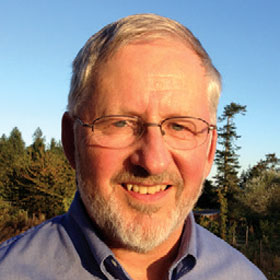
John Peirce
For significant contributions in the area of aeromagnetic data, and international business development related to GEDCO
Citation by Andreas Cordsen
John Peirce has made major contributions in the interpretation of potential field data in Canada and abroad, teaching of the design of 3D seismic surveys, and through building Geophysical Exploration & Development Corporation into a highly respected software and consulting company.
John Wentworth Peirce grew up in eastern Massachusetts. After receiving his PhD from the Massachusetts Institute of Technology and the Woods Hole Oceanographic Institution in 1977, John was an Assistant Professor of Geology at Dalhousie University in Halifax for a few years. Then he became Manager of the Gravity/Magnetics Group at PetroCanada and subsequently Supervisor for the World Basin Study Group in their International Division.
In 1990, John co-founded Geophysical Exploration & Development Corporation (GEDCO) with Andreas Cordsen with the goal of providing a full range of geophysical services to the oil & gas industry, not only in Calgary but also globally. At GEDCO , while being President for many years, John was also responsible for the potential field data acquisition, processing and interpretation.
In 1995, John and Andreas started to teach a course on 3D seismic surveys design for the SEG. In 2000 this course led to the SEG publication of “Planning Land 3D Seismic Surveys” together with Cordsen and Galbraith as co-authors. This course has been taught with several different co-instructors for over 20 years now, and is still being offered around the globe today.
In 2000 GEDCO bought Seismic Image Software and integrated Mike Galbraith‘s team successfully into the business. The merger was a great example of 1+1=3. This further diversification solidified GEDCO’s position as a reputable consulting and software company.
During his varied career John has worked on exploration and research projects on every continent except Antarctica and in most of the major ocean basins of the world. He has authored many papers, including the CSEG Best Paper Award in 1988 for his work with the Ocean Drilling Program. He also was a member of the Editorial Board of The Leading Edge (1985-89) and served on numerous committees for the CSEG, CSPG and APEGA.
While John retired in 2008, and he and his wife, Nancy, moved to Gabriola Island, he still continued as Chairman of GEDCO until the sale of the company to Schlumberger in 2012. John is now a fruit and vegetable farmer and he designs rainwater-harvesting systems on the island.
It is with great pleasure and respect that the CSEG presents the CSEG’s highest honour, the CSEG Medal, to John Peirce.
CSEG Technical Achievement
The Technical Achievement Award is awarded to an individual who, in the unanimous opinion of the Honours and Awards Committee and the Executive Committee, has made an outstanding technical contribution in the field of Canadian Geophysics as manifest over the past five years.
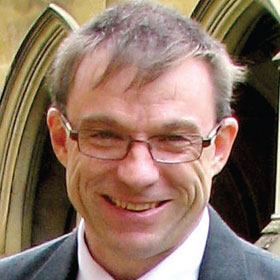
Richard Bale
For notable contributions to the field of multi-component seismic
Citation by Rob Kendall and Jim Gaiser
Richard Bale is receiving the Technical Achievement Award this year for his significant contributions in multicomponent research. He holds both a BA and an MA in mathematics from the University of Cambridge in the UK, and obtained a Ph.D. in geophysics from the University of Calgary in 2006. Richard received the award for outstanding Ph.D. thesis in Geology and Geophysics for his dissertation on elastic wave-equation depth migration of split shear-wave (S-wave) data in azimuthally anisotropic media.
Richard began his geophysical career with GECO in the UK in 1984, and continued with Schlumberger Geco-Prakla, in both the UK and Norway, as a senior research geophysicist. From 1997 to 2001 he was project manager for multicomponent processing development for Geco-Prakla and WesternGeco, responsible for software used to process 4C data in the North Sea and Gulf of Mexico. He moved to Calgary in 2001, and after receiving his Ph.D. worked for Veritas/CGGVeritas from 2004 to 2011, and then for Key Seismic Solutions Ltd where he is currently Vice President Research and Development.
In addition to his advanced research on imaging S-waves in birefringent media, Richard has authored or co-authored a number of SEG, EAGE and CSEG papers on two important aspects of multicomponent processing. In particular, his papers Whale and Bale et al., 2009 and Bale et al., 2009 not only provide excellent tutorials on shear-wave splitting but show that accounting for birefringence in heavy oil datasets leads to a step change in converted-wave (PS-wave) data quality. After overburden corrections are made, high-resolution fracture and stress properties are obtained at target levels. These data correlate with borehole log information and are extremely useful for reservoir monitoring.
Another area of Richard’s innovative research addresses the challenging asymmetric properties of PS-waves, where he has demonstrated the essential properties that govern common-offset vector data. Utilizing wavefield VP/VS, conventional 3D geometries can provide uniform illumination for improved imaging and other applications beneficial for S/N enhancement and joint inversion with P-waves.
Richard’s contributions to the geophysical community also go beyond volunteering as an Associate Editor for the SEG. He has been influential in promoting multicomponent technology throughout his career in a world-wide sense, and has co-taught the DoodleTrain multicomponent course for nine years in the Canadian market. Richard is clearly a deserving recipient of the 2016 Technical Achievement Award.
CSEG Honorary Membership
Honorary Membership is normally given only to a few members who have gained recognition for distinguished contributions in the field of geophysics or in service to the CSEG, either nationally or internationally.
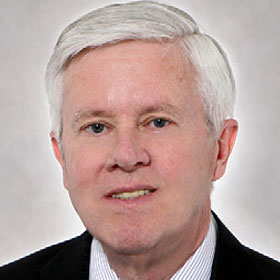
Daniel Patrick Hampson
For longstanding and exceptional contributions to geophysics through the development of world-class software and through continuous support of the CSEG and the greater global geophysical community
Citation by Brian Russell
I am honoured to have been asked by Dan Hampson to write his citation for CSEG Honorary Membership. I can think of no one else in the geophysical community in Canada, or indeed the world, more deserving of this award.
Dan grew up in Montreal, where his mathematical talent was recognized early when he was offered a scholarship to Loyola High School. Dan subsequently attended Loyola College and received a B.Sc. in Physics, and McMaster University where he received a M.Sc. in Physics. Following this, he spent two years in Ghana teaching high school physics with Canadian University Services Overseas (CUSO), an experience that lead to Dan’s lifelong love of both teaching and travel.
When Dan returned to Canada, he headed west and joined Veritas Seismic Ltd., then a fledgling company of roughly 25 employees. Although Dan started as a seismic processor, a job that allowed him to fully understand the nature of the seismic business, both Dan and Veritas soon realized that his real talent was in developing new software algorithms and Dan was promoted to manager of Seismic Research. Dan’s task was simply stated yet incredibly challenging: develop new seismic processing algorithms that would give Veritas a competitive edge in the Calgary market. The problems to work on were also clear: statics and multiples. Dan first attacked the statics problem by developing the GLI (generalized linear inverse) approach to the determination of refraction statics, a method that is still used successfully around the world. He then turned his attention to multiples, modifying a technique developed by Jeff Thorson and Jon Claerbout to create the Parabolic Radon Transform. Dan’s paper on the subject has been widely quoted, and his algorithm implemented in processing centres throughout the world. In addition, in 2006 Dan received the prestigious SEG Reginald Fessenden Award for his invention of the Parabolic Radon Transform.
In 1987, Dan co-founded Hampson-Russell Software with Brian Russell, and helped grow the company from three employees to almost fifty in 2002, by which time Hampson-Russell had developed and sold their innovative inversion and AVO software to oil and service companies all over the world. During the early days of Hampson-Russell, Dan also found time to complete his MBA at the University of Calgary. In 1996, Dan received the SEG Cecil H. Green Enterprise Award for the creation of Hampson-Russell Software, jointly with Brian Russell. In 2002, Hampson-Russell was acquired by VeritasDGC and the company is now a subsidiary of CGG GeoSoftware. Dan has continued to produce innovative software and most recently conceived and wrote a new algorithm for the simultaneous inversion of prestack seismic data. Dan continues to enjoy developing new software ideas and interacting with his colleagues throughout the whole CGG organization.
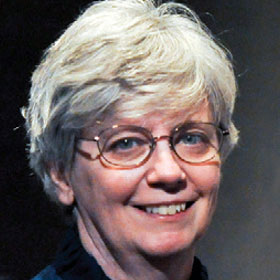
Penny Colton
For remarkable, lengthy and selfless contributions to CSEG activities, geoscience history and technical excellence
Citation by Paul Anderson
Penny has been a tireless volunteer for the CSEG over most of her career. My first exposure to the CSEG occurred, like many of the young geoscientists that have come across Penny’s path, through Penny’s encouragement to volunteer with the society. She sees the opportunity the CSEG provided to young geoscientists to network with other professionals and encouraged them to not only join the society, but to also engage with the CSEG’s many committees’ and programs. While I can only speak to the past 18 years, I cannot think of a single year that Penny has not introduced a recent graduate or transplant to the local industry to the society and individual members within the society. As such she has been a tremendous asset to the CSEG in attracting and retaining members over the many cycles our industry has endured.
Penny filled in as Co-Editor for the 1989 CSEG-CSPG Convention “Exploration Update” abstracts (240 pages), and later served on CSEG Executive as Treasurer in 1997. She was acting Director of Educational Services when Luncheons moved to the Telus Convention Centre in fall of 2002, for the first DoodleTrain, and later for the start of Lunchbox Geophysics. As “VP of Luncheons” in 2003, she started digital recordings with Rob Stewart’s “Mars in Canada” webcast in May 2003. Aware of the advantages of digital photography, a DSLR followed her home to replace her older SLR, and she easily thanked visiting SEG speakers with photos of the huge CSEG luncheon audiences.
Subsequently, Penny has volunteered countless hours as a photographer for the CSEG, capturing thousands of pictures of CSEG Technical Luncheons, workshops and courses, many of which have been used in the RECORDER and other publications. This time as a volunteer photographer for the CSEG has also fed into Penny’s extensive assistance and support, both informally and formally with The RECORDER Editorial Committee to ensure the RECORDER is a great publication. It is for these reasons I am pleased to recommend Penny Colton for Honorary Membership to the CSEG.
CSEG Special Commendation Award
The Special Commendation Award is awarded to an individual who, in the unanimous opinion of the Honours and Awards Committee and the Executive Committee, has made a significant contribution to the CSEG, the public and/or the industry as a whole. This award may be for recognized community leadership, professional leadership, or for contributions outside the mainstream of geophysics.
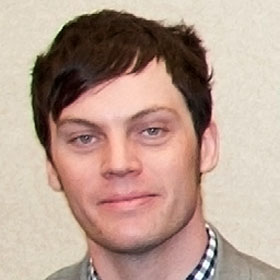
Kurt Wikel
For extraordinary efforts in support of CSEG Executive (Director of Education) activities
Citation by Rob Kendall
Kurt Wikel was elected as Assistant Director of Education in 2013. In that role he was required to cover for Shawn Maxwell approximately 50% of the time due to Shawn’s extensive travel commitments. He accepted this task with eagerness and enthusiasm. During his term as Director of Education, he showed great drive and creativity in bringing in luncheon speakers, helping to create the Value in Geophysics (VIG) and also in organizing the Microseismic User Group (MUG). In the following year when his term was supposed to be finished he continued to help with the Director of Education role since Paul Anderson moved on to a new job in a different city.
Kurt was also instrumental in organizing and promoting the Land Seismic Workshop. Kurt leapt at the opportunity to coordinate the first CSEG-EAGE workshop as part of his executive role. He applied his typical energy and enthusiasm to the tasks involved with coordinating the workshop and collaborating with our EAGE representatives, and the workshop itself was a resounding success.
Kurt is a go getter who gives 100% to whatever task is thrown at him and the CSEG appreciates that type of commitment.
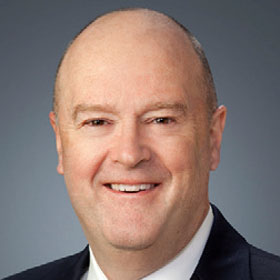
Steven Lynch
For development of alternative methods of visualizing seismic data, and conspicuous personal courage
Citation by Oliver Kuhn
Dr. Steven Lynch has ostensibly made significant contributions outside the mainstream of geophysics, but perhaps a more accurate description of his work is to say that he has worked tirelessly to bring a crucial but previously underappreciated aspect of geophysics into the mainstream where it belongs. In every geophysical exercise, the data are analyzed and interpreted by humans through visual inspection at some point, usually at several points. Steven has asked the questions, “What impact does the method of display have on the analysis and interpretation?” and, “What are the optimal display methods for different types of data and objectives?” In answering those questions he has tackled some very complex topics, including the nature of the geophysical data being displayed, the types of features being highlighted, the physiology of the human eye, and the neurology of the visual processing system in the human brain.
After 26 years in industry in both management and geophysical programming roles, Steven returned to academia to pursue his Ph.D. in Geophysics at the University of Calgary, and was successfully awarded his Doctorate in 2008. The topic of his thesis was “Seismic Visualization”; I have heard it referred to as the only Ph.D. thesis that can be read for fun. Since then he has relentlessly attacked the entrenched forms of seismic display – mainly seismic wiggle, variable density, grey scale and unsuitable colour bar displays – arguing that these primarily show only amplitude, are not particularly suited to the “hardware and software” of the human visual system, and generally do not effectively convey the wealth of detail present in seismic and other geophysical data sets. He has also promoted and developed alternate ways of displaying data, including his well-known “Seismic Terrain Display” which shows seismic trace data as if the peaks and troughs were a topographic surface viewed 3-dimensionally from an angle. The additional information that can emerge is startling, and can include both real, previously overlooked geological and lithological features, as well as processing artifacts and other deficiencies in the data.
Steve and I have had several discussions about his methods, and I recall once saying to him, “Well everyone knows even supermodels have pimples, but it doesn’t mean we want to see them.” However, deep inside I always knew that was largely beside the point. One key role of the scientist is to see everything possible in the data, and then make decisions about what is signal and what is noise. Steve has promoted and given us tools to do a better job of that. One Chief Geophysicist I know makes it standard practice for his junior Geophysicists to read Steve’s Ph.D. thesis, in order to gain an appreciation for the importance of display choices. Another well respected new ventures Geophysicist refers to Steve’s latest display software as his “secret weapon”.
In addition to his visualization work, over the years Steve has been a frequent and enthusiastic contributor to the seismic community, in the form of writing software, chairing technical sessions, and delivering papers, articles, talks, and webinars. He has shown remarkable courage in co-authoring articles with me on mental illness and heart attacks in an effort to raise awareness on these conditions. He is engaging, personable, and passionate about geophysics. In short, he is the type of person who helps make the CSEG such a vibrant and rewarding community, and a very worthy recipient of the CSEG Special Commendation Award.
CSEG Meritorious Service Award
The Meritorious Service Award is given to members of the CSEG who have made a prominent and/or lengthy contribution to the Society and/or the industry as a whole.
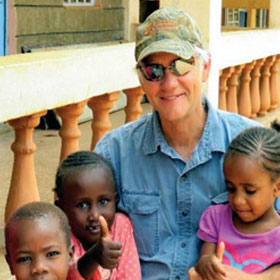
Larry Herd
For lengthy support of CSEG and CSEG social committees, and recent executive level contributions to both the CSEG and the CSEG foundation
Citation by John Boyd
I was honoured to have the privilege of writing a citation for a Meritorious Service Award to Larry Herd. We have worked together as business partners, directors and CSEG volunteers since 1981, when Larry became the fourth employee of Boyd Exploration Consultants. This company evolved into Boyd PetroSearch and was acquired by RPS Energy in 2010.
Larry graduated from the University of Manitoba in 1978 and then moved to Calgary and the oil patch. I met him in a period when I was realizing that Boyd Exploration could only evolve into a growing, long -lived company if we brought in young, smart ambitious people. Larry was younger than me, and I suspected, smarter, so I convinced him to give the consulting business a try.
Larry is an outstanding geophysicist, both as an interpreter and as an expert in seismic field operations. In 1986, our company had a call from Potash Corp, enquiring about our geophysical services. The oil business was a bit flat and we were very interested. Larry, Neil Thompson and I talked it over and we decided that Larry should go to Saskatoon but we couldn’t afford an airplane ticket, so he would have to drive. The trip eventually generated a high level of business, from that year to the present day. It also opened up significant business opportunities for the seismic industry throughout those years. Larry also had an interest in Geomatics and eventually set up a Division of the company called Boyd Geomatics, later Pixxures Canada. He returned to Boyd PetroSearch in 2003 and became president in 2006.
The DoodleSpiel was Larry’s first CSEG activity. He chaired it twice and skipped the winning rink five times. His paper “Seismic Acquisition in the Loess Hills of China won the CSEG Best Paper award in 1985. Larry and I had travelled to this area in China the previous year and he had the bright idea of drilling shot holes in the powdery Loess hills with a hand powered auger. When the Chinese delegation arrived in Calgary to discuss the project, Larry gave them a Canadian Tire ice fishing auger, asked them to duplicate it, with extensions to get the hole deeper, and use these devices for shot hole drilling. They worked beautifully!
He won another Best Paper award in 1989 and presented it at the 1990 SEG Convention in San Francisco. Larry was CSEG Vice president in 2010 and President in 2011. He has been Chair of the CSPG/CSEG Honorary Address, a member of the T-Wave Committee and a Seismic in Motion Volunteer. He was on the CSEG Foundation Board as a representative of the Society and has chaired the Foundation since 2014. As well as his personal contributions, he has always encouraged his staff to volunteer for the CSEG.
The years from 2014 to 2016 have been difficult and challenging for geophysicists and their employees. In Larry’s business career, he has been challenged by the ups and downs of our industry but has always succeeded. In the last two years as Foundation Chairman he has insisted that the Foundation reach out to help its members and that it is not appropriate to cut back on essential services or programs. This is the sort of attitude that will help all of us get our industry back on its feet.
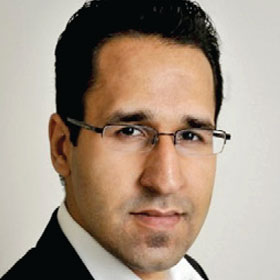
Mohammed Al-Ibrahim
For conspicuous (and conspicuously cheerful) early career contributions to a wide range of CSEG committee activities
Citation by Paul Anderson
Since graduating from the University of Calgary in 2007, Mo has been a devoted volunteer with the CSEG. While I do not claim he has volunteered on every committee within the CSEG, there are very few who have not interacted with Mo in his various activities with the society. In addition to being a volunteer photographer, Mo has been an active volunteer with a number of committees, including: The RECORDER, CSEG Outreach Committee, CSEG Journal, CSEG DoodleTrain & CSEG Symposium. His geophysical background, reliable skills and cheery teamwork have been essential to the success of these CSEG projects.
For the past several years, Mo has worked diligently with the Luncheon Committee, ensuring the agenda and announcement slides are ready in advance of each luncheon and working with other committee members to ensure the “behind the scenes” technical support for presenting, recording and webcasting our luncheons flows as smoothly as possible.
Mo sees the society as a means for likeminded professionals to network and interact and does whatever he can to help foster that community spirit within the CSEG. It is for these reasons I am pleased to recommend Mohammed Al-Ibrahim for the CSEG Meritorious Service Award.
CSEG Meritorious Service Award
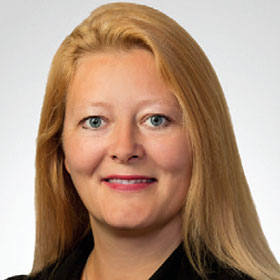
Nanna Eliuk
For lengthy and continuous efforts in public geoscience awareness and fundraising
Citation by Kathleen Dorey
Nanna Eliuk, originally from Denmark, completed her B.Sc. in geology and her M.Sc. in geophysics and geology at Aarhus University in 1995 and 1997 respectively prior to deciding to move to Canada. Nanna is currently Senior Geophysicist with Alvopetro Energy Ltd. in Calgary and is a professional geophysicist with over 20 years’ experience in the oil and gas industry. Her experience has included geophysical positions with increasing responsibility at junior as well as integrated multi-national oil and gas companies in Calgary.
Nanna’s work history has been diversified with both petroleum exploration and development experience. She has expertise in conventional and unconventional plays; in carbonate and clastic reservoirs with different depositional and structural settings (including pre-salt) in various basins around the world. Prior to joining Alvopetro, Nanna was the Senior Explorationist for Condor Petroleum (Kazakhstan) for two years, and prior to that was the Vice President of Geophysics and Land for Waldron Energy. Nanna started her career in 1997, holding progressively senior roles at Husky Energy for five years, followed by Compton Petroleum for over 6 years. Her extensive experience includes geophysical evaluation and analysis for business development opportunities and new ventures in various international basins, along with regional mapping, play fairway analysis, petroleum system evaluation, prospect definition and seismic attribute analysis.
While advancing her career in the Canadian and International arena, Nanna has been an active and tireless volunteer on many fronts with the CSEG. She has served as session chair and co-chair for both the CSEG/CSPG Conventions in the past, has been an integral part of the technical committee for past conventions, written book reviews for the RECORDER and reviewed abstracts for the SEG Convention. She has also volunteered her time with the Earth Science for Society, the CSEG Mentorship program, the CSEG Outreach program (high school fairs in Saskatchewan) and was a key contributor in the early days of the Junior Geophysicists Forum Committee. Nanna helped organize and presented at the first CSEG/EAGE Land Seismic workshop in September 2014, which was a financial and technical success. In addition, she has agreed to take on the role of General Chair for the CSEG at the 2017 Geoconvention in Calgary.
When reviewing candidates for this service award, Nanna set herself apart from others by her innate ability to interact and communicate well within the CSEG society and to contribute not only to the functionality of her volunteer positions but also by her ability to fundraise for some of the events she was helping organize. She has always been ready to shoulder her volunteer responsibility with enthusiasm, resourcefulness and abundant energy. It is for these abilities as well as her long list of volunteer contributions that Nanna has been recognized and deservedly awarded the CSEG Meritorious Service Award for 2015.











Share This CSEG Report